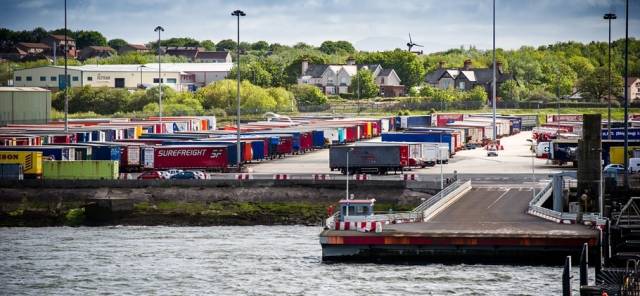#PortLinks - Irish Sea and Isle of Man ro-ro operators using Heysham Port, in north-west England, now have a new link road, the Bay Gateway connecting the M6, bypassing congestion in Lancaster, writes Jehan Ashmore.
The Bay Gateway opened on Monday and the new road infrastructure will directly benefit the Lancashire port’s main cross Irish Sea clients, Seatruck Ferries and Stena Line. The Irish Sea's only dedicated unaccompanied freight trailer operator, Seatruck operates to ports in the Irish Republic and Northern Ireland. Stena's freight-only Heysham service concentrates solely to Belfast Port.
Also to benefit the Isle of Man Steam Packet Company whose main year-round route serves Douglas, where seasonal-routes fast-ferry, Manannan will for a second winter lay-up at the Manx capital until at least the end of this year.
In another development at Heysham (Peel Ports Group) has announced they are to invest in a new £10m link-span bridge and fourth berth. This is to accommodate larger ro-ro vessels.
The funding will also see a new pontoon built to support offshore crew transfer vessels, a new port entrance created and various improvements to the port IT and terminal operating systems. Work on the project to expand capacity begins this month and is scheduled to be completed in October 2017.
Port director, David Huck said: “This is a transformational time for Heysham port. Our major investment to increase capacity and flexibility will further strengthen the port’s role as a logistics hub for the region, particularly for services to Ireland and the Isle of Man. We’ve also built in an element of future-proofing, giving us the ability to accommodate projected volumes for many years to come.”
Heysham Port is also the closest to several major offshore infrastructure projects, the proposed National Grid connection of Moorside nuclear power station in Cumbria and the Dong Energy Walney Extension wind-farm.
































































